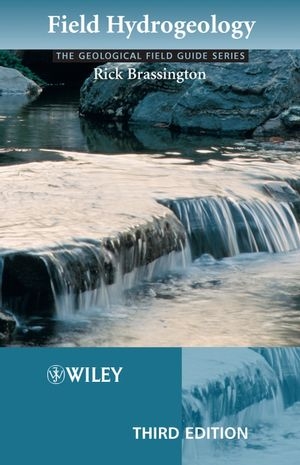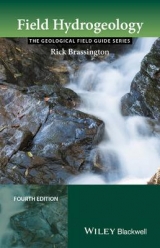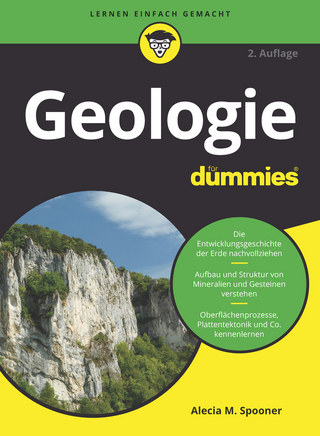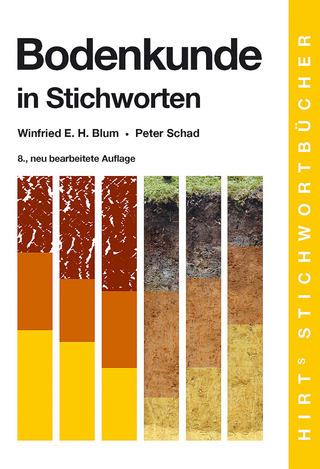
Field Hydrogeology
John Wiley & Sons Ltd (Verlag)
978-0-470-01828-6 (ISBN)
- Titel erscheint in neuer Auflage
- Artikel merken
The focus is on current practical applications of hydrogeological investigations using new case histories and a new chapter on specialist techniques has been included.* Handy pocket-size for field research* Features case histories* Focuses on practical applications* Contains a new chapter on groundwater investigations Field Hydrogeology, Third Edition is an invaluable resource for undergraduate and postgraduate students of geology, hydrogeology, environmental sciences and engineering, as well as a wide range of professionals working in the water resources and environmental protection fields.
Rick Brassington, Consultant Hydrogeologist.
Preface. Acknowledgments. 1 Introduction. 1.1 Groundwater systems. 1.2 Conceptual model. 1.3 Hydrogeological report writing. 2 Desk Study. 2.1 Defining the area. 2.2 Identifying the aquifers. 2.3 Groundwater levels. 2.4 Surface water. 2.5 Recharge. 2.6 Groundwater use. 2.7 Groundwater chemistry. 2.8 Aerial photographs and satellite imagery. 2.9 Planning a fieldwork programme. 3 Field Evaluation of Aquifers. 3.1 Grain size analysis. 3.2 Hydraulic properties of aquifers. 3.3 Hydraulic properties and rock types. 3.4 Assessing hydraulic properties. 3.5 Using hydraulic property information. 4 Groundwater Levels. 4.1 Water-level dippers. 4.2 Continuous water-level recorders. 4.3 Measuring ground levels and locations. 4.4 Tool-box. 4.5 Well catalogue. 4.6 Field surveys for wells, boreholes and springs. 4.7 Interpretation of abstraction borehole water levels. 4.8 Groundwater level monitoring networks. 4.9 Groundwater level fluctuations. 4.10 Managing groundwater level data. 4.11 Constructing groundwater contour maps and flow nets. 4.12 Interpretation of contour maps and flow nets. 4.13 Using other groundwater information. 5 Rainfall, Springs and Streams. 5.1 Precipitation. 5.2 Evaporation. 5.3 Springs. 5.4 Stream-flow measurement. 5.5 Stage-discharge relationships. 5.6 Choosing the best method. 5.7 Processing flow data. 6 Pumping Tests. 6.1 What is a pumping test? 6.2 Planning a pumping test. 6.3 Pumps and pumping. 6.4 On-site measurements. 6.5 Pre-test monitoring. 6.6 Test set-up. 6.7 Step tests. 6.8 Constant rate tests. 6.9 Recovery tests. 6.10 Pumping test analysis. 6.11 Tests on single boreholes. 6.12 Packer tests. 7 Groundwater Chemistry. 7.1 Analytical suites and determinands. 7.2 Sampling equipment. 7.3 Sampling protocols. 7.4 Monitoring networks. 7.5 Using chemical data. 8 Recharge Estimation. 8.1 Water balance. 8.2 Rainfall recharge. 8.3 Induced recharge. 8.4 Other sources of recharge. 9 Specialist Techniques. 9.1 Borehole and piezometer installation. 9.2 Down-hole geophysics. 9.3 Using artificial tracers. 10 Practical Applications. 10.1 Developing a conceptual model. 10.2 Groundwater supplies. 10.3 Contamination investigations. 10.4 Groundwater lowering. 10.5 Rising water tables. 10.6 Investigating wetland hydrology. 10.7 Groundwater modelling. Appendix I Good working practice. Appendix II Conversion factors. References. Index.
| Erscheint lt. Verlag | 27.10.2006 |
|---|---|
| Reihe/Serie | The Geological Field Guide Series |
| Zusatzinfo | Illustrations |
| Verlagsort | Chichester |
| Sprache | englisch |
| Maße | 118 x 180 mm |
| Gewicht | 260 g |
| Einbandart | Paperback |
| Themenwelt | Naturwissenschaften ► Biologie |
| Naturwissenschaften ► Geowissenschaften ► Geologie | |
| Naturwissenschaften ► Geowissenschaften ► Hydrologie / Ozeanografie | |
| Technik | |
| ISBN-10 | 0-470-01828-3 / 0470018283 |
| ISBN-13 | 978-0-470-01828-6 / 9780470018286 |
| Zustand | Neuware |
| Informationen gemäß Produktsicherheitsverordnung (GPSR) | |
| Haben Sie eine Frage zum Produkt? |
aus dem Bereich



